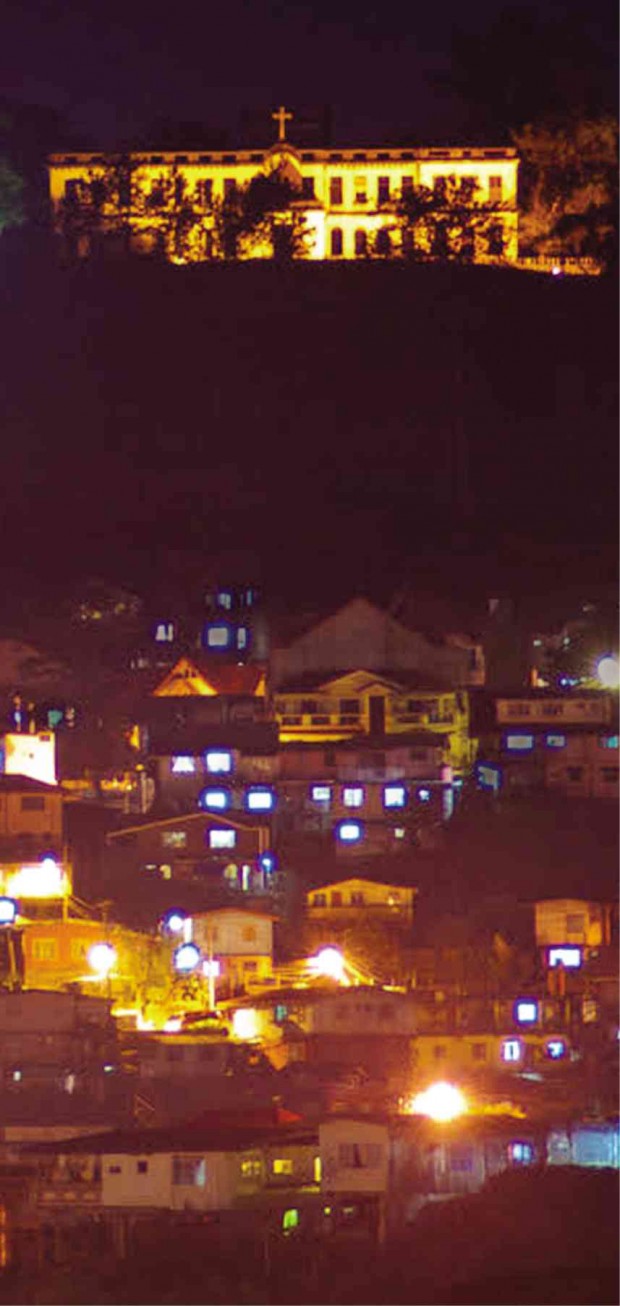Baguio now has 4 ‘cultural’ landmarks
BAGUIO CITY—The National Museum of the Philippines has declared four century-old buildings in the summer capital, two of these known among tourists as “haunted” structures, as important cultural landmarks of the country.
The National Museum issued Resolution No. 06-15 which classifies the former Dominican order’s Grand House (which was turned into the abandoned Diplomat Hotel on Dominican Hill), the Mirador Jesuit Villa (also near Dominican Hill), the popular “White House” on Leonard Wood Road and the old Baguio lodging house owned by the Peredo family as cultural structures now under government protection.
The resolution, issued on Nov. 27, said “these ancestral houses and public structures are reflective of the nation’s history, enduring the elements of time and preserving the nostalgia of Filipino art and culture in the 18th century for posterity.”
These structures were built between 1900 and 1930, “exemplifying well preserved American-style architecture, which include Victorian architecture,” the resolution said.

DIPLOMAT Hotel used to be Baguio City’s Dominican Grand House. Now an important cultural landmark, the abandoned hotel is currently being restored by the city government. RICHARD BALONGLONG/INQUIRER NORTHERN LUZON
Raquel Flores, a curator of the National Museum, said the new status of these cultural structures mandates their preservation by the city government.
Flores said this would require the government to spend for the structures’ upkeep and protection should there be a request for such from the structures’ owners.
Article continues after this advertisementThe Peredo’s Lodging House, which turned 100 years on Dec. 28; the church-owned Mirador Villa; and the White House (also known as the Laperal mansion) are privately owned but their new status means repairs must require the National Museum’s permission, Flores said.
Article continues after this advertisement“[All] restoration plans must be approved by the National Museum. We have to make sure that the materials, like the paint to be used, will be [the closest approximation to the makeup of] the original structure,” she said.
“Why do we have to preserve these structures? Because there is no better proof of the beautiful and ingenious architectural designs of our ancestors than the structures they built,” she said.
Flores was here last week when the National Museum and the Peredo clan unveiled a marker affirming its status as an important cultural property.
The Peredo’s Lodging House is the ancestral house of Rita and Roque Peredo, which was built in 1915. It was among the few structures in Baguio that survived when the city, where the Japanese Imperial Army in northern Luzon was headquartered, was attacked by American bombers at the end of World War II. It was turned into a lodging house to pay for its maintenance.
The Laperal mansion is a tourist attraction for its reputation as a “haunted house,” which its new owner, the Tan Yan Kee Foundation of the Tan Group of Companies, has embraced.
It was built in the 1920s by the Laperal family. It is now an art gallery featuring artworks made of bamboo.
The Dominican Grand House (now the Diplomat Hotel) is another popular ghost hunting spot in Baguio. It was declared a historical site and was listed in the National Registry of Historic Sites and Structures in the Philippines, through the National Historical Commission of the Philippines, in 2013.
The original Grand House was built in 1915 by Dominican missionaries originally to serve as a boarding school and a vacation house. It was sold to a private developer and was turned into a hotel in the 1980s.
The structure was eventually taken over by the national government. In 2004, it was relinquished to the Baguio City government and the Sandiganbayan which used a portion of the structure to house its court rooms.
The Mirador Jesuit Villa was built in 1908 and was home to the Manila Observatory’s Baguio station.
The Jesuits abandoned the villa in 1945 when Japanese soldiers seized it. This was destroyed after the Americans bombed Baguio, leaving only its stone and lime mortar foundations.
It was rebuilt and is now a spiritual retreat house. Kimberlie Quitasol, Inquirer Northern Luzon